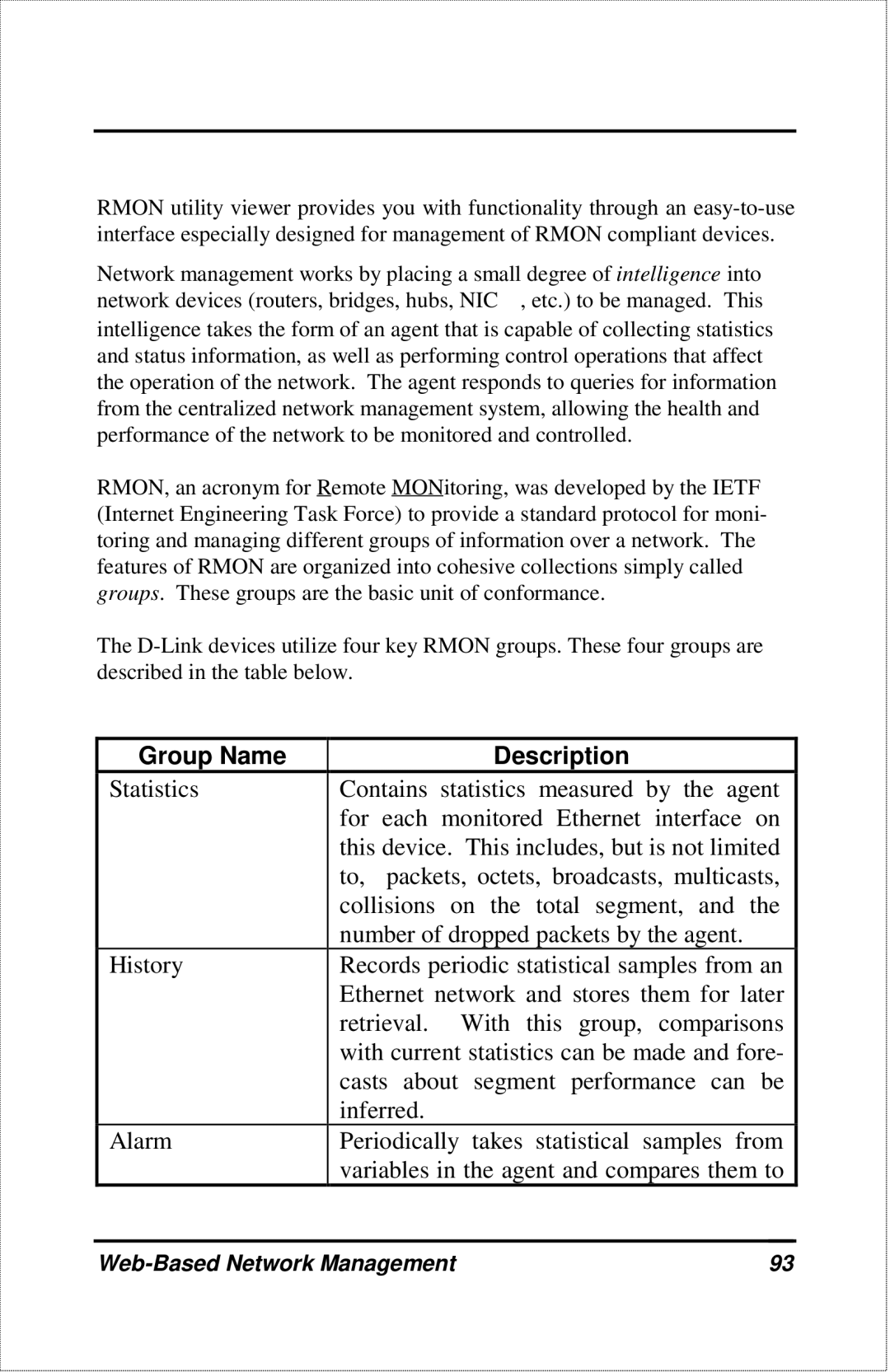
RMON utility viewer provides you with functionality through an
Network management works by placing a small degree of intelligence into network devices (routers, bridges, hubs, NIC , etc.) to be managed. This intelligence takes the form of an agent that is capable of collecting statistics and status information, as well as performing control operations that affect the operation of the network. The agent responds to queries for information from the centralized network management system, allowing the health and performance of the network to be monitored and controlled.
RMON, an acronym for Remote MONitoring, was developed by the IETF (Internet Engineering Task Force) to provide a standard protocol for moni- toring and managing different groups of information over a network. The features of RMON are organized into cohesive collections simply called groups. These groups are the basic unit of conformance.
The
Group Name | Description |
Statistics | Contains statistics measured by the agent |
| for each monitored Ethernet interface on |
| this device. This includes, but is not limited |
| to, packets, octets, broadcasts, multicasts, |
| collisions on the total segment, and the |
| number of dropped packets by the agent. |
History | Records periodic statistical samples from an |
| Ethernet network and stores them for later |
| retrieval. With this group, comparisons |
| with current statistics can be made and fore- |
| casts about segment performance can be |
| inferred. |
Alarm | Periodically takes statistical samples from |
| variables in the agent and compares them to |
| 93 |
